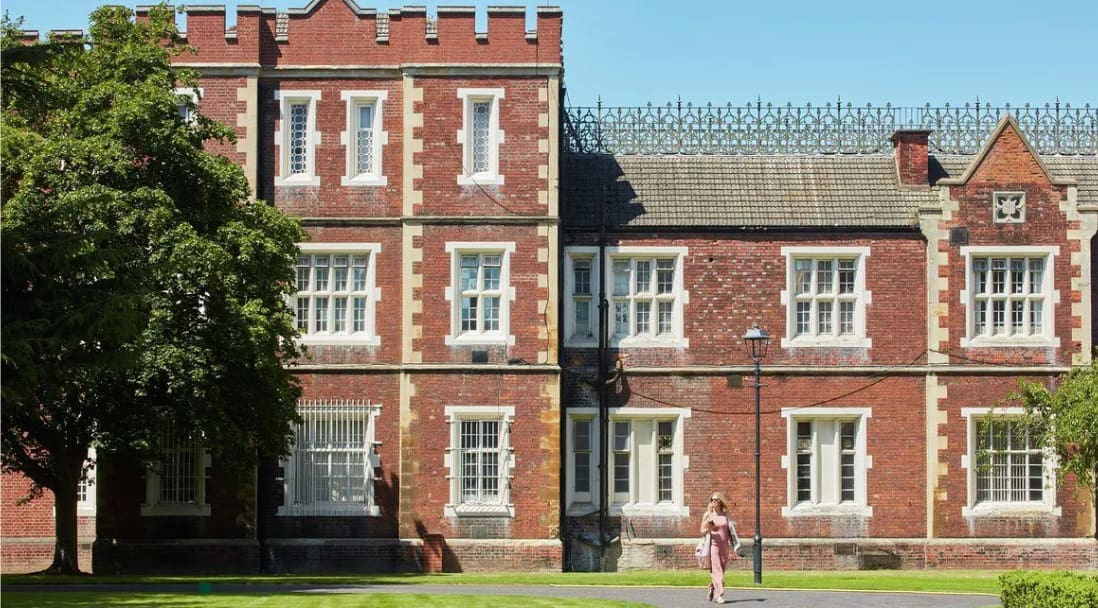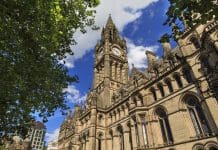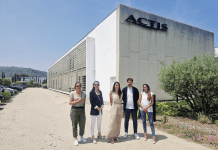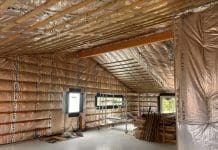Simon Vernon-Harcourt, design and planning director at City & Country, explores the necessity of retrofitting the UK’s historical building stock
Renovating and converting existing properties uses far less carbon than constructing new buildings from scratch, yet all the talk is about how we can build new super-efficient homes, often demolishing existing buildings along the way, rather than how we can enhance our existing ones through retrofitting.
Retrofitting and creative reuse of our existing housing and building stock will be essential for reaching our net zero targets.
The solution to building sustainably is first to reuse what we have, and to reuse as much of the existing building as possible. This reduces the number of new materials that need to be dug out of the ground and shipped from country to country, creating embodied carbon.
According to the American Institute of Architects, converting existing buildings results in embodied carbon savings of 50% to 75% compared with building from scratch. This is because a huge amount of carbon is generated when building foundations, such as walls, floors and roofs.
However, this major contributor to greenhouse gasses is seldom recognised, as most carbon reduction studies focus only on energy usage and emissions during a building’s operating life. This needs to change.
Retaining historical buildings reduces unnecessary release of carbon
In our heritage conversion The 1840, St George’s Gardens in Wandsworth, the carbon generated during the building’s construction was released into the atmosphere over 180 years ago.
The original planning approval for The 1840 specified demolishing vast areas of fascinating support buildings that served the hospital. Things like boiler houses with wonderful cast iron columns and trusses, sculleries, and common rooms.
But we gained permission to retain these, preserving them for future generations but also ensuring all the carbon that was released when these buildings were constructed did not go to waste.
The local authority also allowed us to add further dwellings in the roof of the historic building, efficiently creating homes in a sustainable location. All these additional dwellings were created within minimum carbon.
Embodied carbon versus operational carbon
If we are serious about building sustainably, then we must factor in the carbon emitted throughout a building’s construction and maintenance process as well as its running costs. This means counting the embodied carbon from construction and renovation as well as the operational carbon released during the life of the building from heating, lighting and appliances. But to do this, we need regulation and a single simple methodology that encourages creative reuse, not another complex and complicated series of hurdles to jump. Without this, architects, designers and the construction industry will struggle to reach net zero.
In its 2019 Heritage Counts publication There’s No Place Like Old Homes, Historic England commissioned a study comparing the carbon generated by retrofitting and insulating a Victorian end-of-terrace house against the estimated carbon generated from demolition and building a similar-sized modern house in its place. The research found that by 2050 retrofitting would reduce carbon emissions by 60%.
Measured over an expected lifespan of 60 years, embodied carbon from the refurbishment was only 2% of the building’s total emissions, whereas under the newbuild scenario, embodied carbon would make up 28% of total emissions.
If we are to fully realise the gains from converting existing buildings, we must be able to retrofit them in a way that improves their efficiency.
Modernising without losing character and heritage
In conversion projects, energy efficiency can without a doubt prove far more challenging than building new, as there is a balance between retaining a building’s history and improving its energy efficiency. In conversions, consider adding insulation in floors, walls and roofs where you are confident it will not damage the historic fabric or character. We also look carefully at airtightness, as unlike modern building where you want to create a sealed controlled environment, historic buildings are often built to breath, and rely on drafts and gaps to take condensation away. A badly upgrade historic building will cause it to degrade what makes it so special.
Technology can help. New technology is developing fast, and offers huge potential to improve sustainability, but we need to ensure it works for the homeowner and is a blessing, not a headache. Wherever possible, connect the building to a communal or heat district heating systems. You can also use the latest app controlled smart technology to individually control area heating and to synchronise heating supply with the times when residents are actually in the buildings to minimise heat waste. On some of our conversion sites, we have used the BREEAM assessment method to predict and then monitor sustainability and performance levels. At The 1840, our energy-efficiency measures have reduced carbon emissions by up to 25%.
The scale of retrofitting historical building stock is significant
We know it’s a long road ahead. The UK has the oldest housing stock in Europe, with 38% of homes dating from before 1946, compared with only 29% in France, 20% in Italy and 13% in Ireland. Furthermore, 21% of houses in England are over 100 years old. We also have a strong supply of heritage buildings that can be converted for residential use.
Our industry plays too big a role to be ignored – and with so much of our current and potential housing stock coming from heritage buildings, the spotlight needs to shine as brightly on the creative reuse of our existing building stock as it does on new build homes.














